History of GIS
From prehistoric maps to modern GIS.
History of GIS
A holistic understanding of GIScience can help you use GISystems more effectively and responsibly.
- A good way to start off is to look at the history of the discipline
Pre-Historic Maps
Many of the first maps are difficult to recognize as such.
- Rock art, pottery, carving, and etchings
- Movement, gestures, & oral traditions
- Paper and Textile maps appeared later

Pre-Historic Maps
Frequently depicted:
- Landscapes
- Hunting Grounds
- Villages
- Agricultural Plots
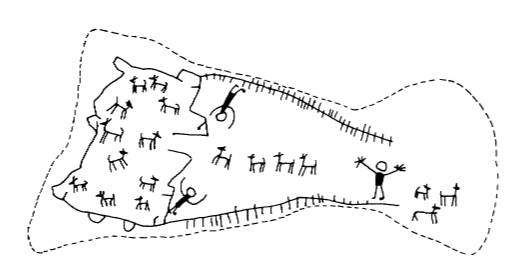
Few Surviving Examples
In many cases we must look to more recent examples.
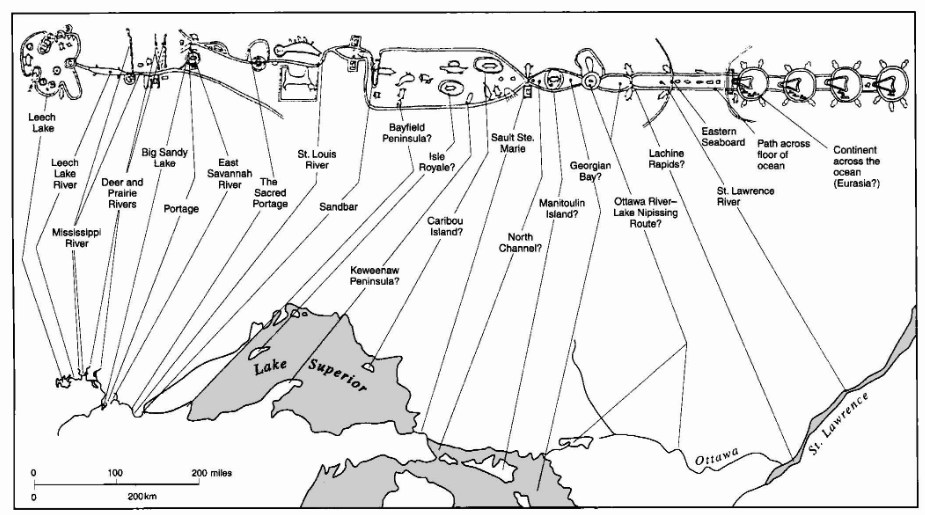
Ojibway birch bark scrolls.
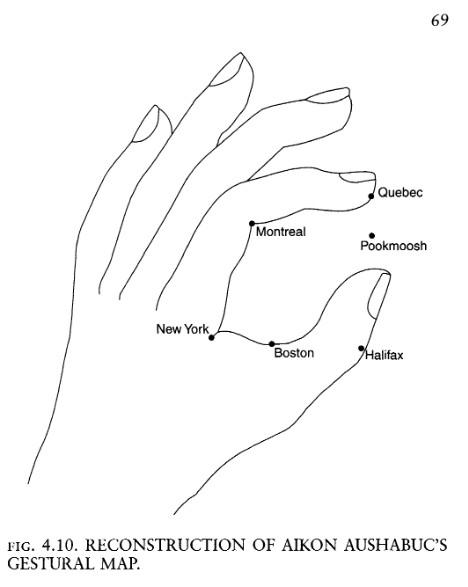
Miꞌkmaq gestural map
Cartography and Navigation
Austronesian expansion started ~5,000 B.P.
- Crossed oceans reading stars, waves, weather, and wildlife
- Charts, songs, and stories to recorded details


Oldest Known Maps
Landscape around Dyje River, Czechia (26,000 B.P.)
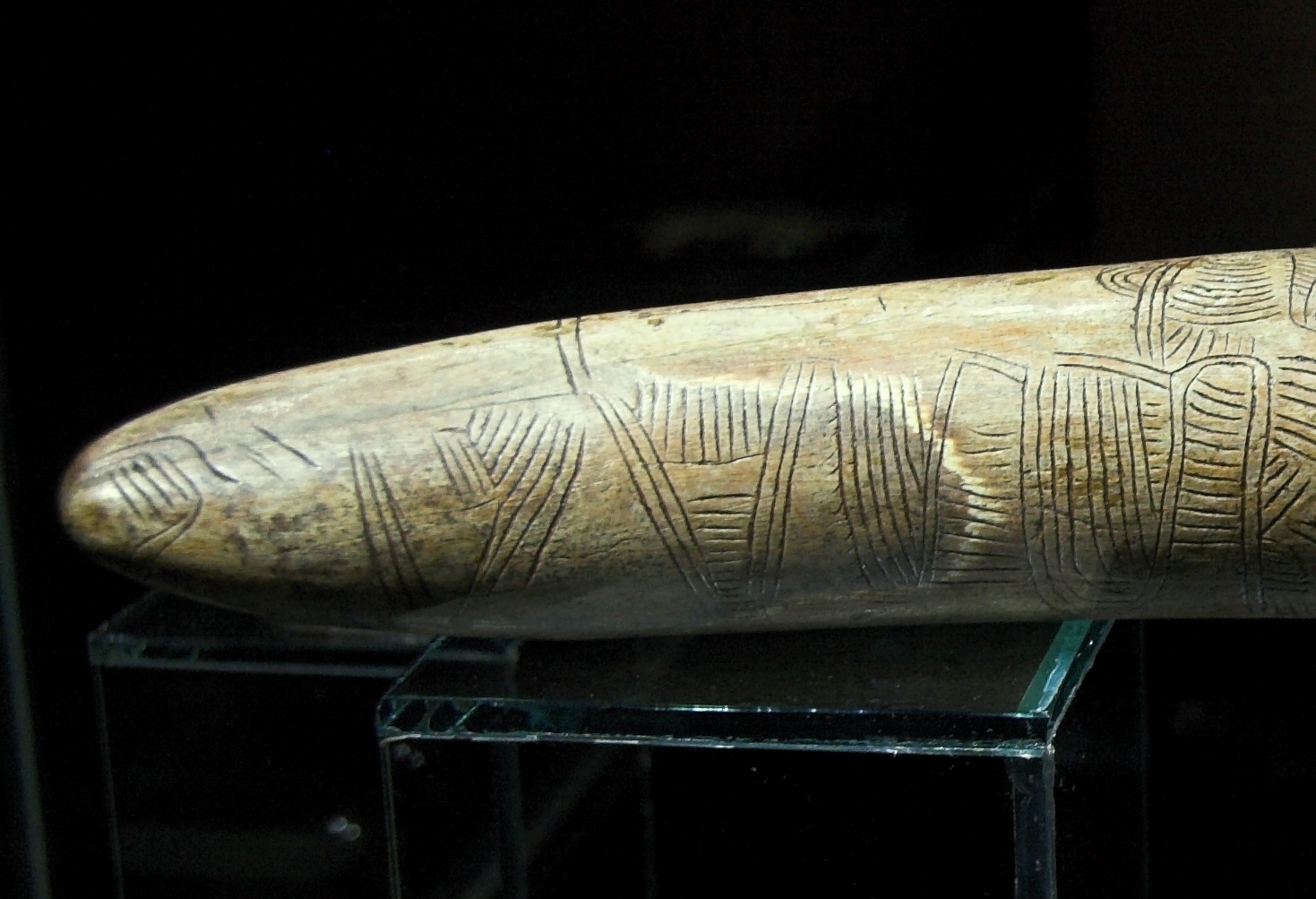
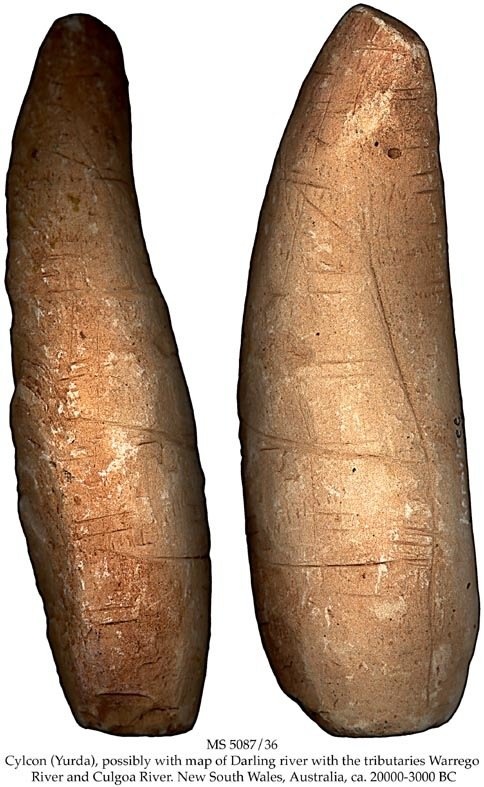
Darling River basin, Australia ~20,000 B.P.
Oldest Known Maps
Map Rock: an engraving of a 600km reach of the Snake River Valley ~12,000 B.P.
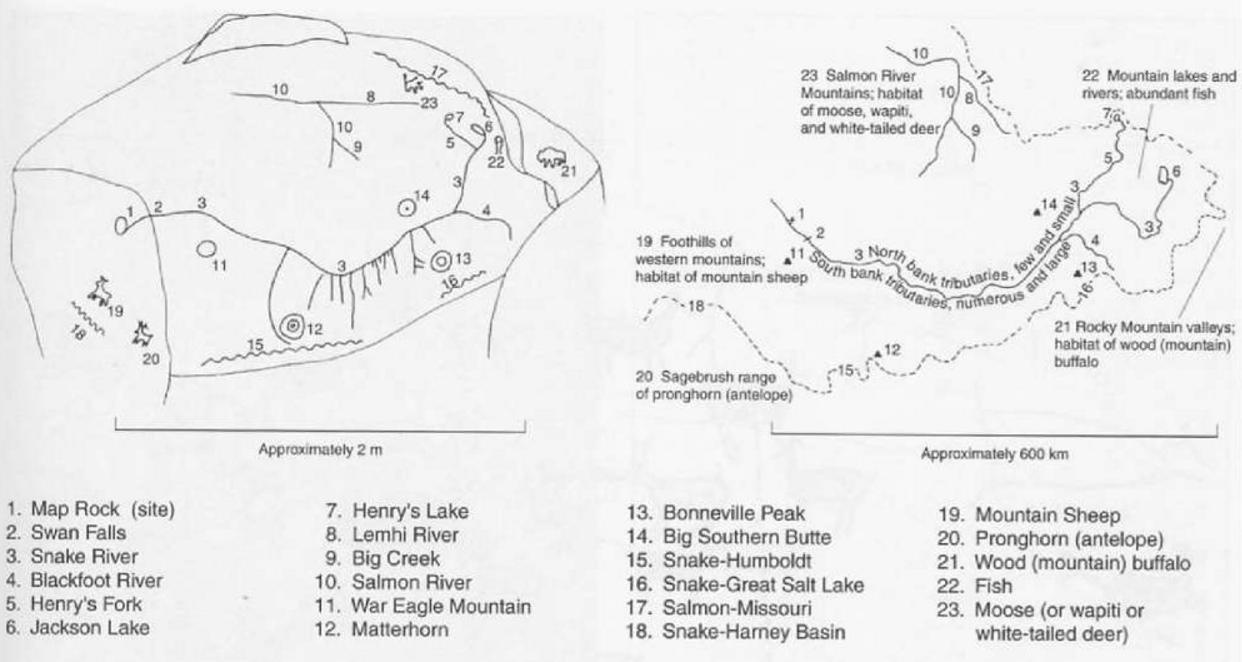

First “Urban” Plans
Çatalhöyük Turkey, 8700 B.P.
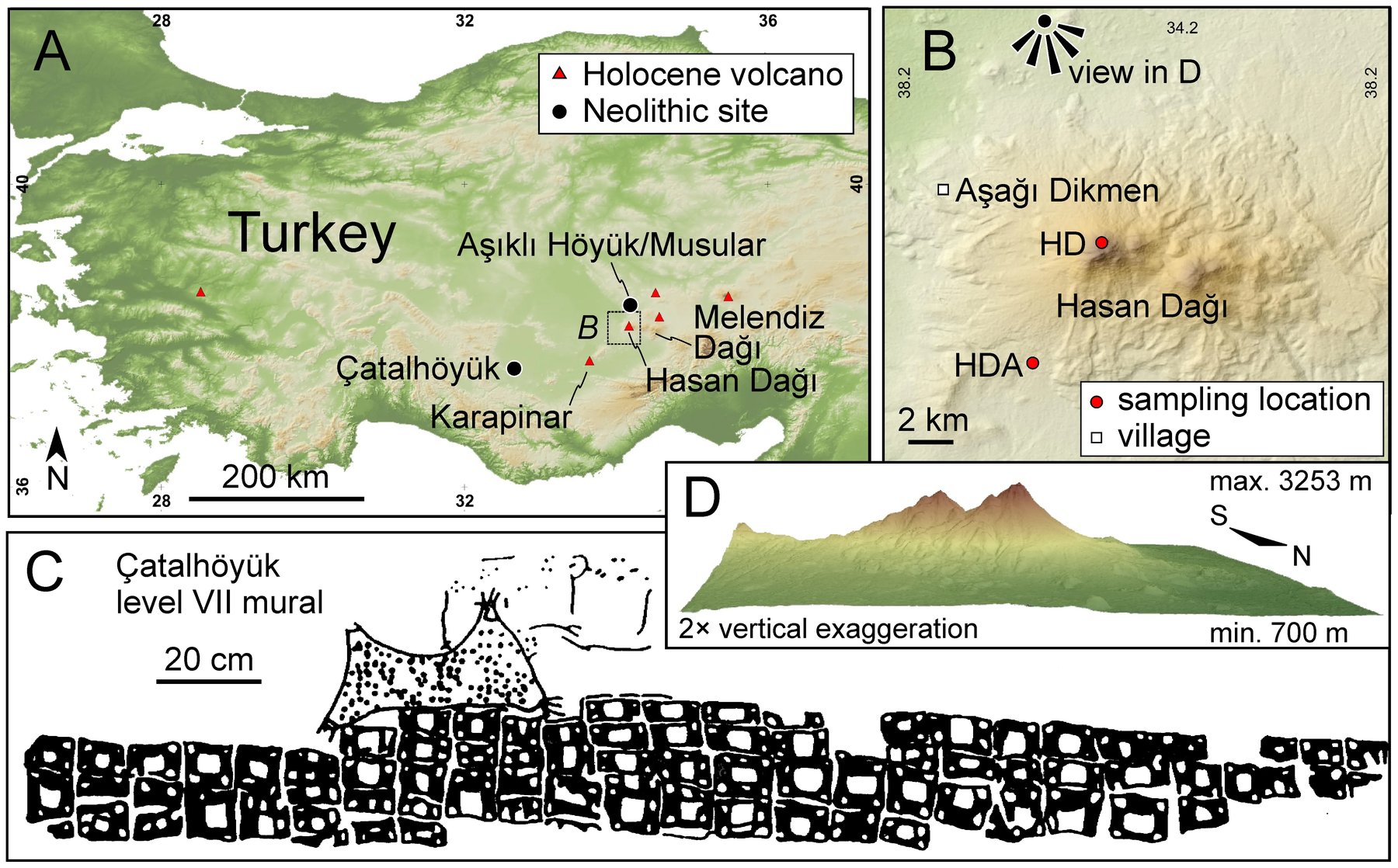
Bedolina, Italy 4000 B.P.
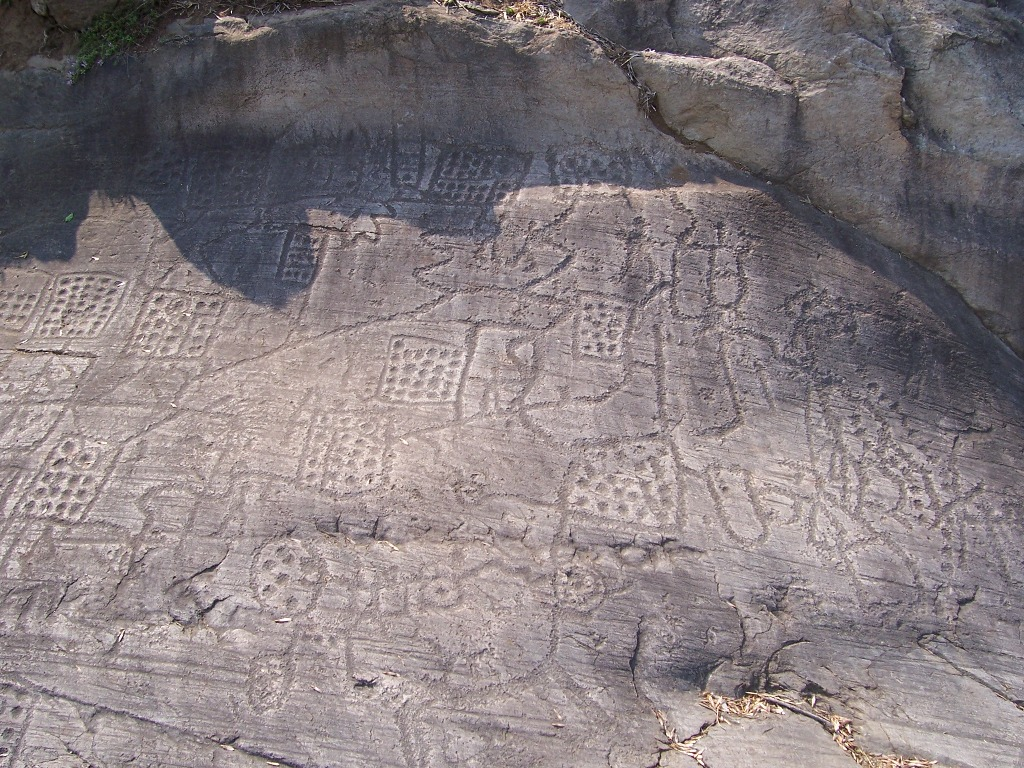
Paper and Textile Maps
Maps on papyrus paper Egypt ~3,200 B.P.
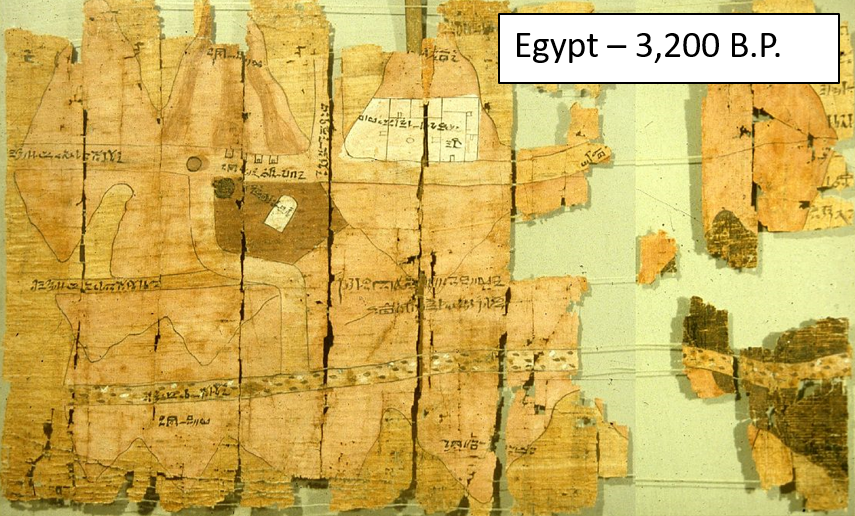
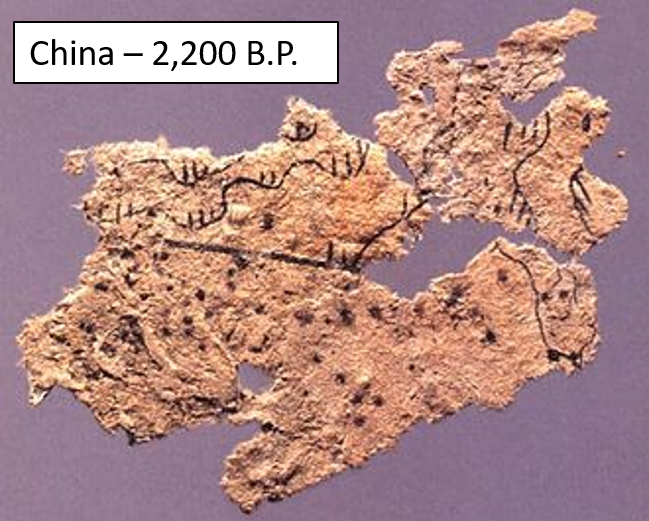
Paper and silk maps China ~2,200 B.P.
TopHat Question 1
The Ojibway people of the Great Lakes region created maps on scrolls of:
- Birch Bark
- Papyrus Paper
- Silk
- Animal Hide
Advent of Surveying
As societies coalesced, methods for the systematic collection of spatial information were developed.
- Objects needed to be drawn to scale
- Geometry and trigonometry
- Surveys were used for:
- Agriculture & construction
- Planning settlements
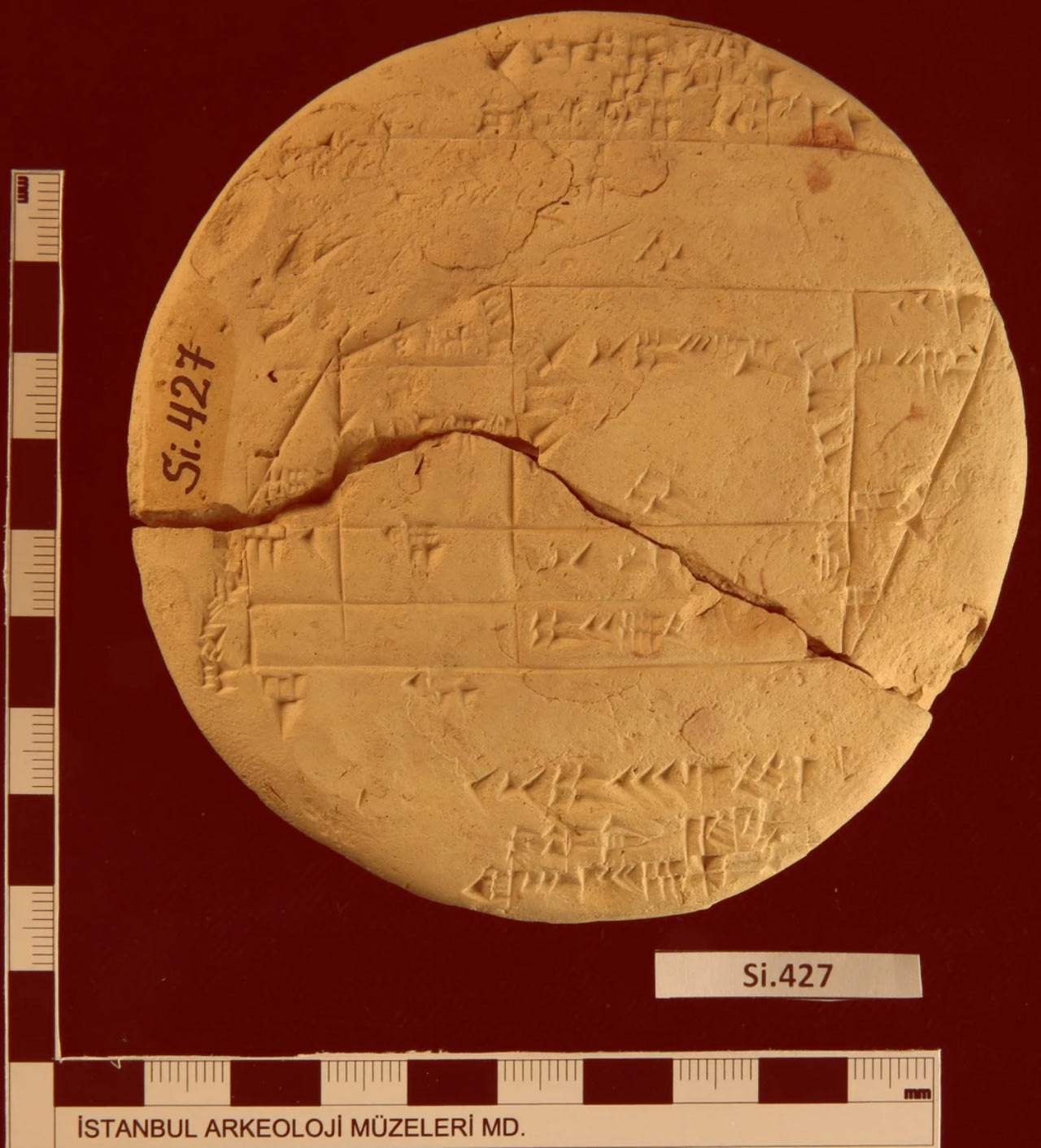
Urban Planning
Town plan of Nippur, Babylonia on a clay tablet. Possibly the earliest map drawn to scale 3500 B.P.
- Over small areas, maps could now “accurately” represent:
- Bearing, Distance, & Size
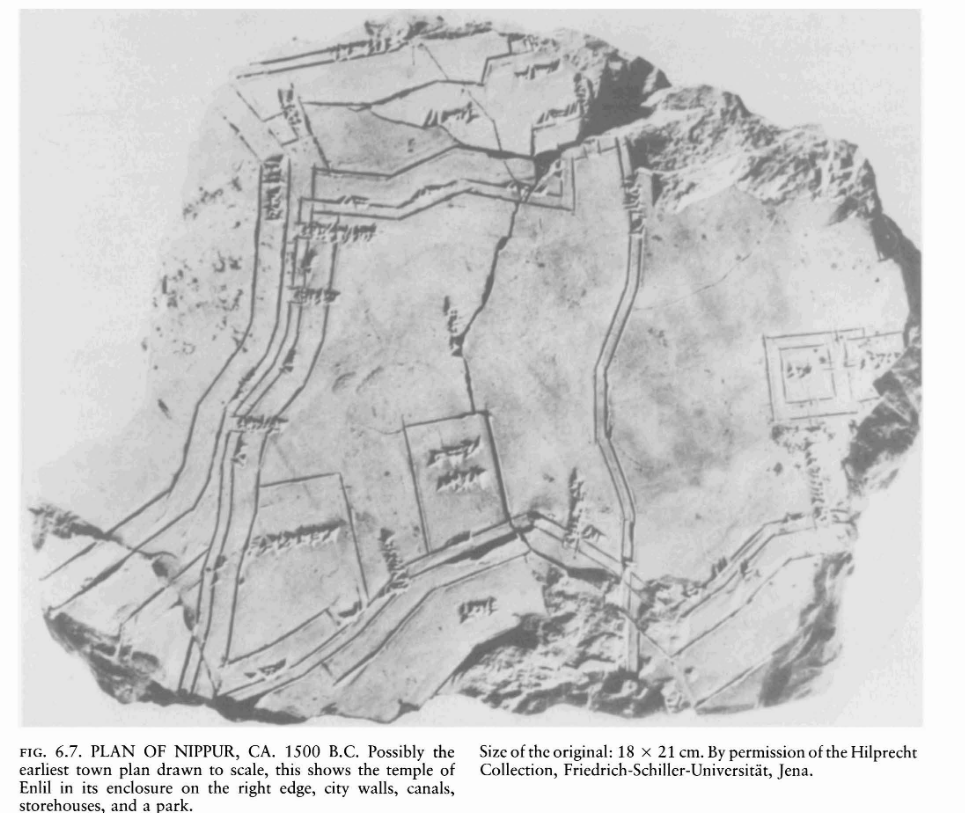
Surveying Methods
Rope stretching is the earliest technique to come about.
- It was labor intensive and only applicable for small areas
- Used for building monuments and agricultural surveys


Surveying Methods
Line of sight methods allowed for surveying over greater distances and mapping larger areas.
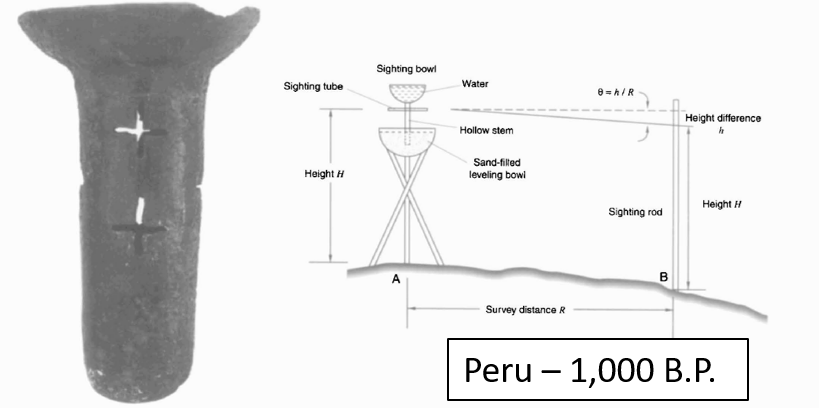
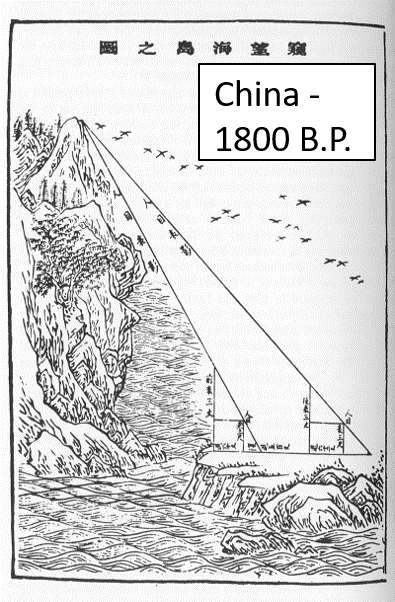
Surveying Methods
Line of sight methods allowed for surveying over greater distances and mapping larger areas.
- Road networks could be constructed
- Distances between settlements could be approximated
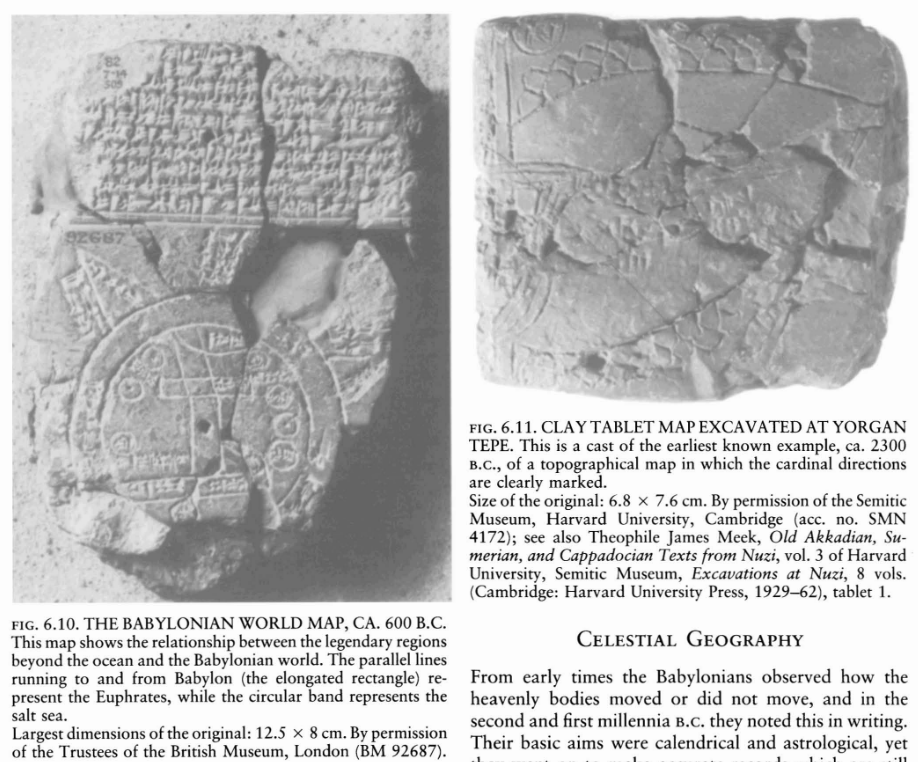
The Groma
The Roman Empire employed professional surveyors.
- Built a massive road network and created an Agricultural land registry
- Used the groma, a precursor of the modern theodolite
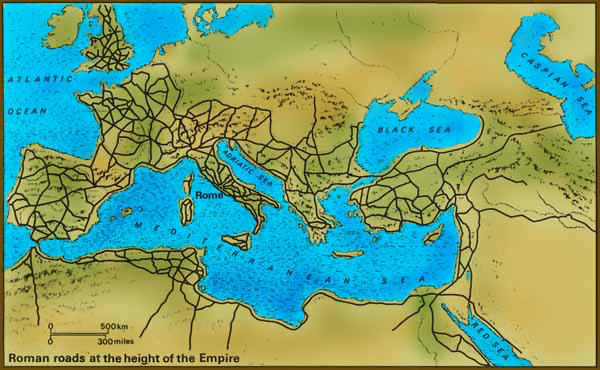
The Compass
Magnetic minerals were by the Olmec civilization (3000 B.P.).

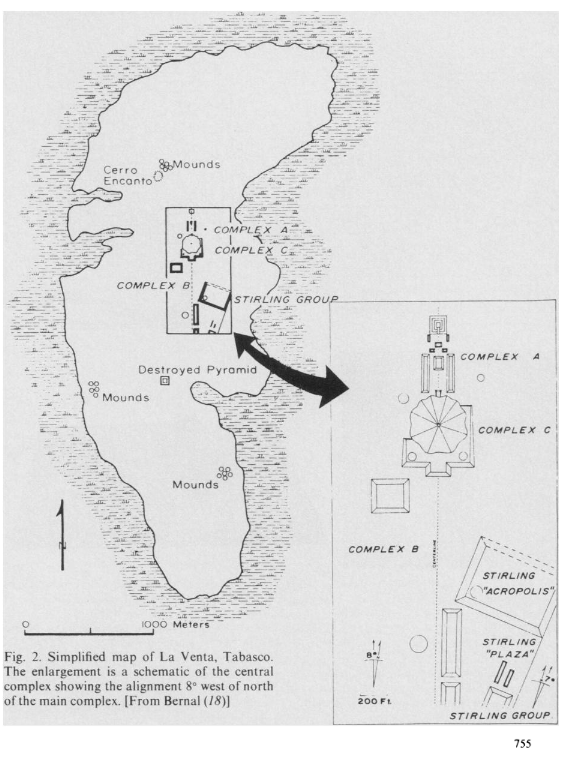
The Compass
Developed during the Han Dynasty ~2200 B.P.
- Applied to marine navigation during the Song Dynasty ~ 1000 B.P.
- Reached Europe around 800 B.P.
- Spurred on the “Age of Exploration”
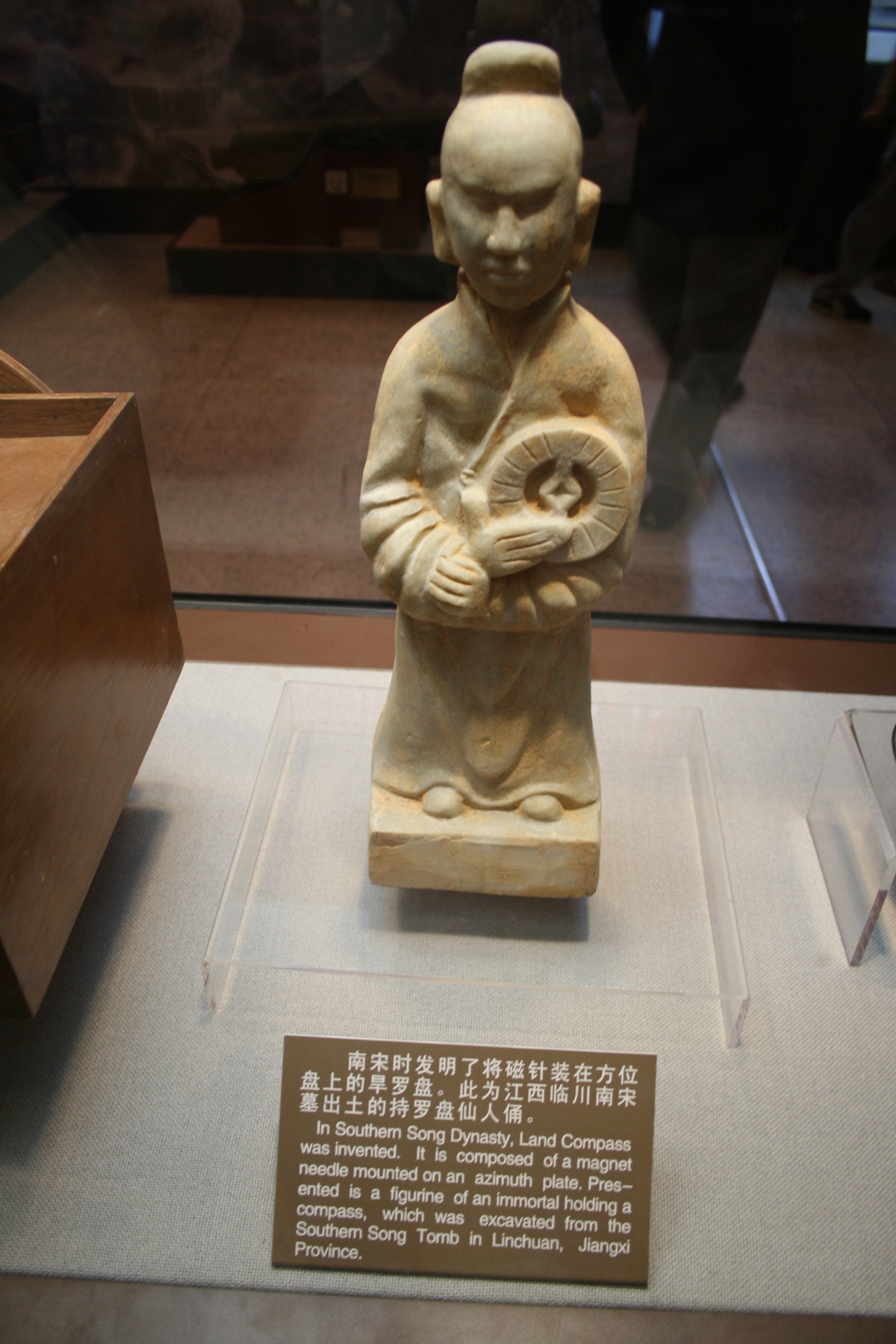
Exploration Spurred Cartographic Advances
Trade and travel expanded conceptualizations of what the world was.
- Greeks built on knowledge of the Egyptians & Mesopotamians
- Maps became more complex and “complete”
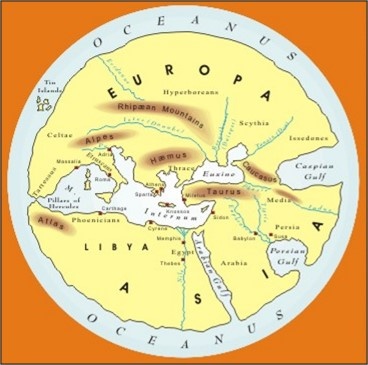
Ptolemy’s Geographia
The first known Atlas 1850 B.P.
- 8 volume GIS prototype with an index of place names and projected maps
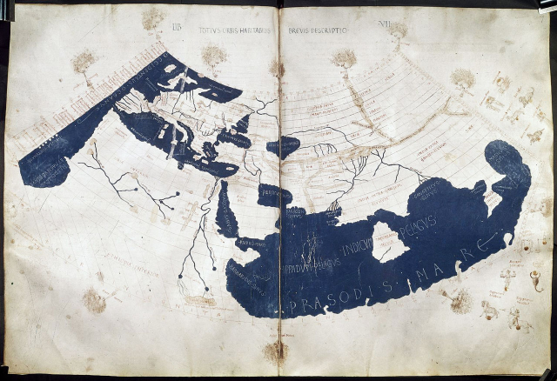
Ptolemy’s Geographia
The first known Atlas 1850 B.P.
- Accounted for earth’s curvature
- Underestimated size by 50%
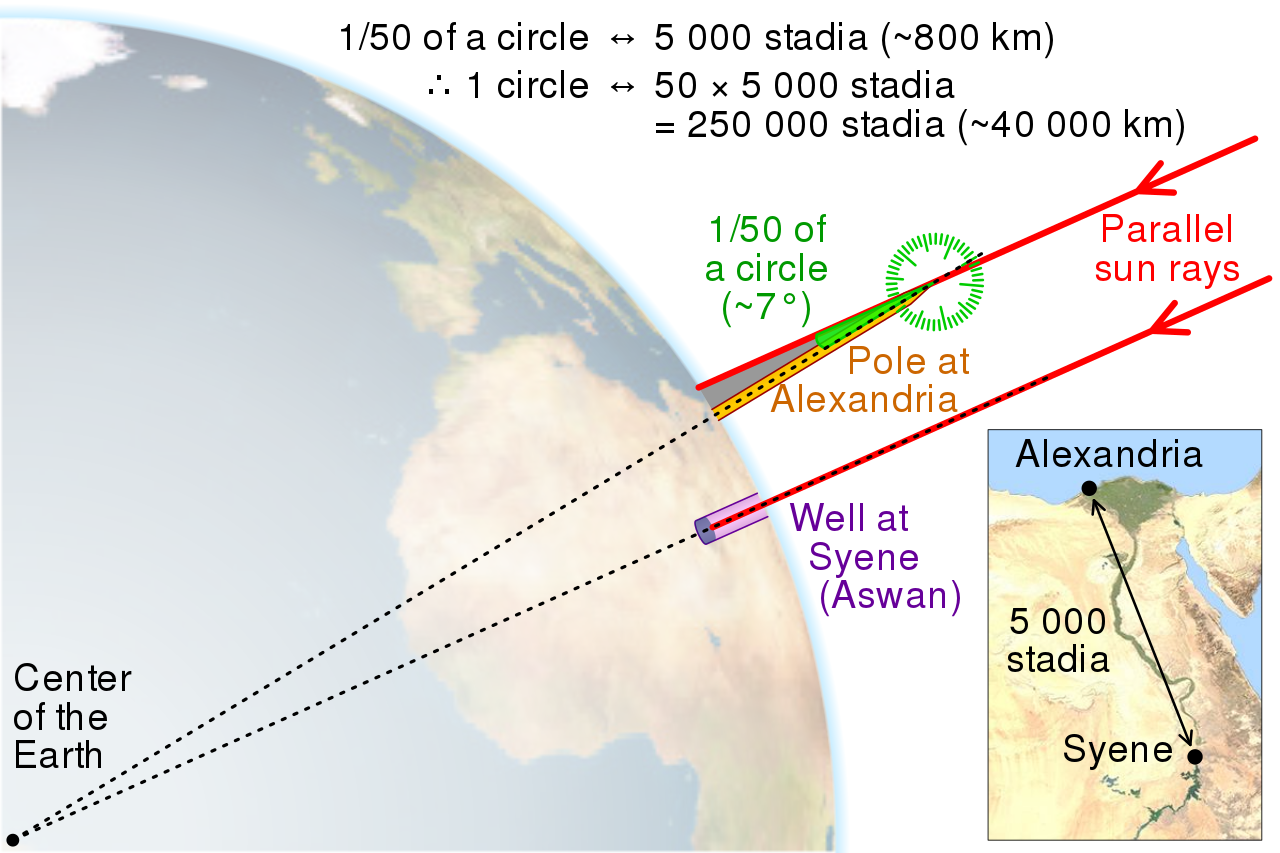
Chinese Exploration
Advances in maritime technology led to a wave of exploration.
- Ming Dynasty Treasure Voyages
- Mapped most of South & East Asia, East Africa, Indonesia & Australia by 600 B.P.
- May have even visited the west coast of North America!
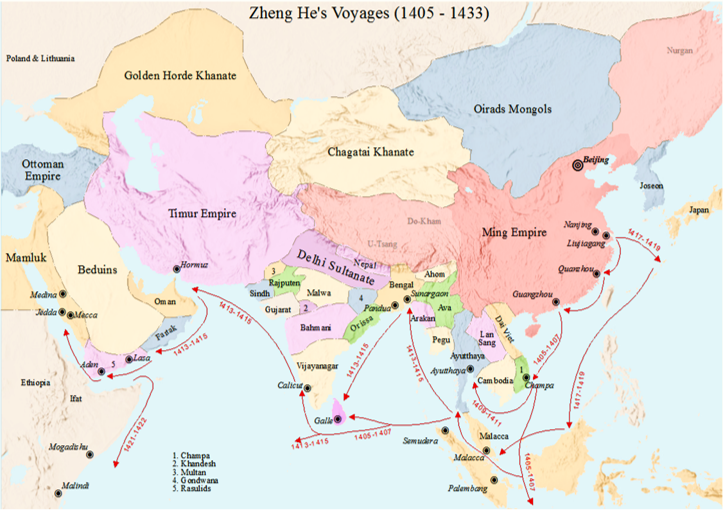
Spread of Information
Chinese and Islamic mariners brought technology westward. By 550 BP. Europeans had the compass
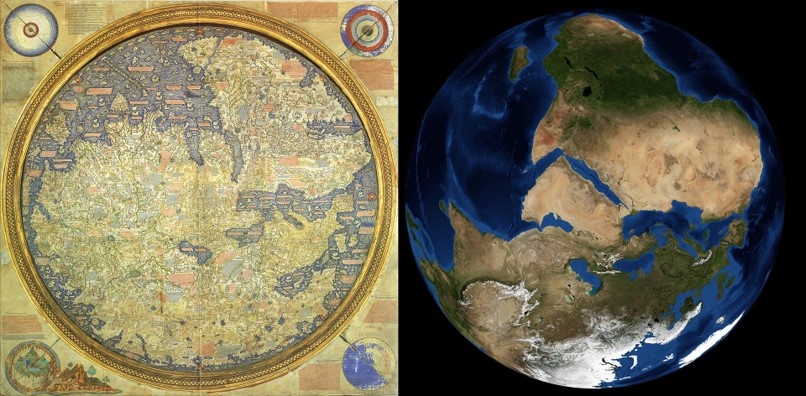
Spread of Information
The “Age of Discovery” in Europe led to the rise of colonialism. European perspectives came to dominate much of the cartographic world.

The Mercator Projection
Revolutionized navigation and cartography.
- Follow constant bearing and reach any location on earth
- Still used today
- Google Maps etc.
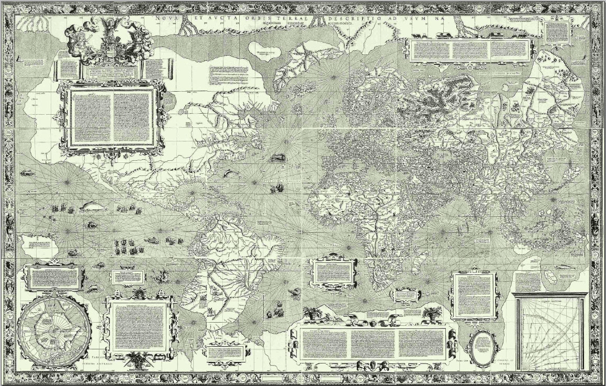
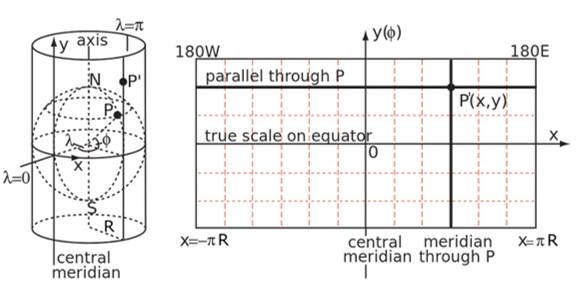
The Mercator Projection
The projection is problematic because it severely distorts the true size of some regions.
- Influences perceptions of high latitudes vs. equatorial regions
- We’ll discuss more about why this is in Module 2

TopHat Question 2
This Mercator projection revolutionized navigation because you could use it to navigate anywhere in the world by following a:
- Line of sight
- Constant bearing
- Sea bird
- Great circle
Spatial Analysis
As our representation of space became more accurate and precise, our ability to make spatial inferences expanded as well.
- As part of the Lab Assignment we’ll recreate an example from history using modern methods.

Backstory: Germ Theory
Early germ theory developed 2000 years ago.
Islamic physicians later formalized the basics. Ibn al-Khatib’s writings on the bubonic plague in 1362:
- “The existence of contagion is established by experience [and] by trustworthy reports on transmission by garments, vessels, ear-rings; by the spread of it by persons from one house, by infection of a healthy sea-port by an arrival from an infected land [and] by the immunity of isolated individuals.”
Backstory: Miasma Theory
Yet European physicians clung to the miasma theory for many centuries.
- Attributed diseases such as cholera to “bad air”
A Case Study: Hand Washing
The Vienna Maternity Hospital had two clinics with different maternal mortality rates.
- First clinic run by physicians and students
- Started each day with postmortems, then went to the maternity ward
- Did not wash hands

A Case Study: Hand Washing
Midwives had more sanitary practices and they did not do postmortems.
- Consequently they had lower mortality rates.
- New chief resident Ignaz Semmelweis suspected contagions from the cadavers were to blame

A Case Study: Hand Washing
In 1847, Semmelweis mandated hand washing and sanitizing instruments with a chlorine solution for both clinics.
- By 1848, mortality in both clinics fell to 1.3%.
- Semmelweis’ was replaced in 1849
- Sanitizing fell out of practice and death rates began to rise again.
A Case Study: Hand Washing
Despite the overwhelming evidence, the hand washing was rejected by the European medical community because it was in conflict with the Miasma theory.
- Some were offended by the idea that physicians were vectors for disease transmission

Foundations of Epidemiology
Dr. John Snow was a in London where cholera outbreaks were a frequent due to poor sanitation practices.
- Dr. Snow was a skeptic of the miasma theory and a proponent of germ theory
- In 1849 he proposed cholera that it was spread by fecal contaminated water
- Compared cholera rates between London districts supplied by different water companies
Foundations of Epidemiology
During an 1854 outbreak in SoHo, Dr. Snow identified the point source of the outbreak using a hand-sketched map.
- Recorded cases using a dash and pumps with a circle
- Created what today would be called a dot map
- Traced cases to the Broad st. water pump

Foundations of Epidemiology
Dr. Snow convinced the government to remove the pump handle and the outbreak subsided
- The medical community in London continued to reject germ theory
- Miasma theory wouldn’t be dispelled until the invention of the microscope twenty years later

Belief Perseverance
Rejection of sanitary practices in the European medical community is an example of belief perseverance.
- A common issue that has impeded numerous scientific advancements (eg. plate tectonics, climate change, vaccines, etc).
- Belief perseverance has many causes but it is often exacerbated by misogyny, racism, and ethnocentrism.
Canadian Context
Cartography facilitated colonialism and territorial expansion throughout Canadian history.
- The British and Canadian governments conducted surveys to map out resources
- Treated the land as a “blank canvas”
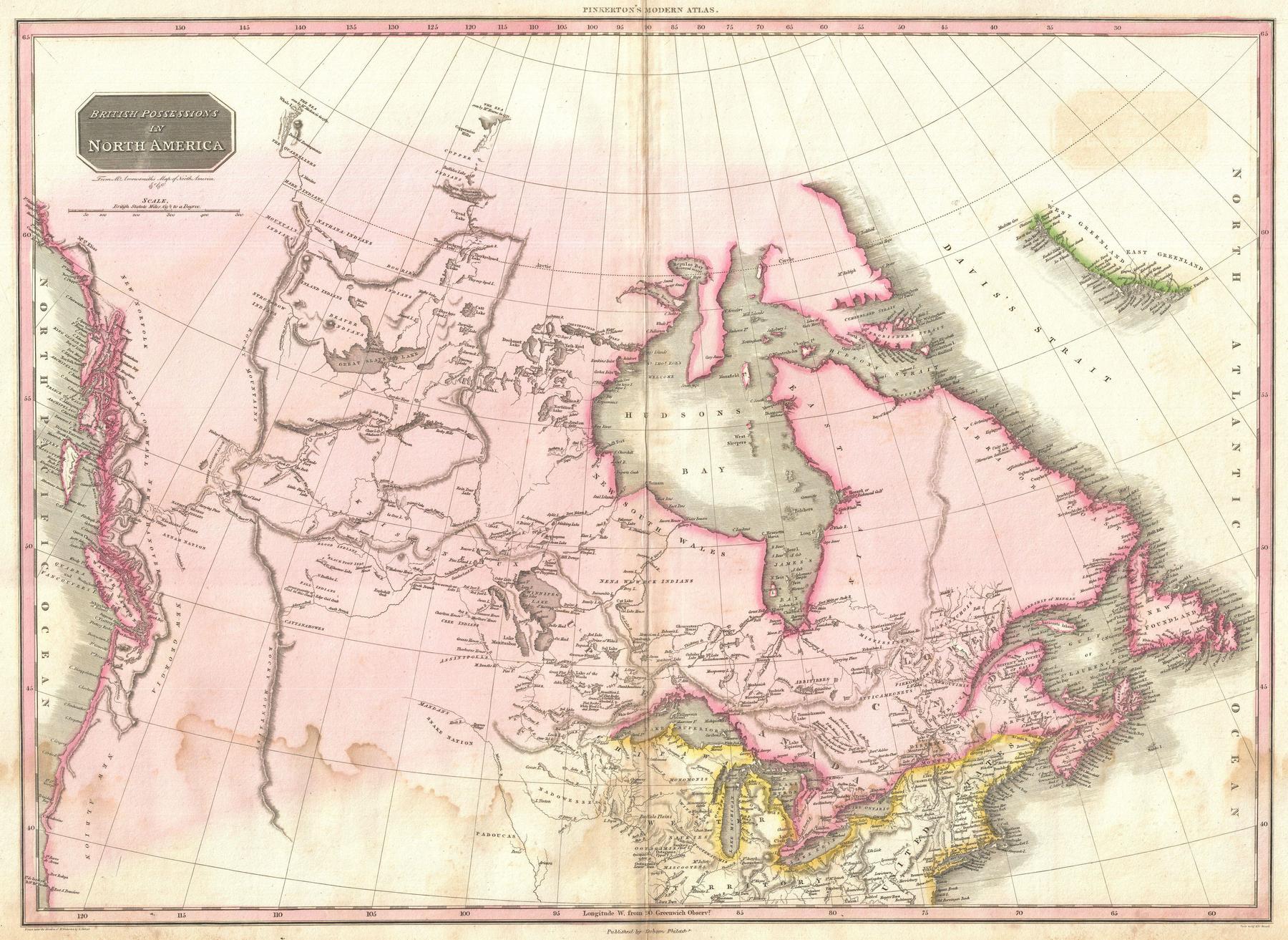
Canadian Context
Canada’s first scientific agency, founded in 1842. The GSC mapped resources and promoted expansion.

The government used GSC maps to identify and “claim” valuable territories.
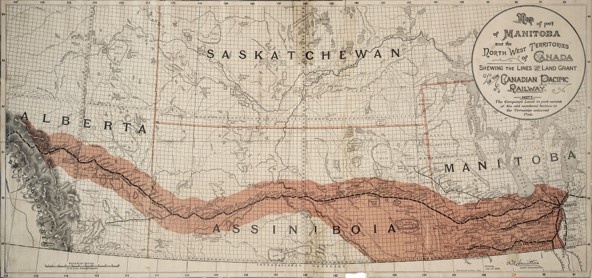
Numbered Treaties
Building on GSC Surveys, the government “negotiated” the numbered treaties.
- Cited survey maps as evidence of their “sovereignty”
- The RCMP were created to enforce treaties and displace Indigenous people

Canada Land Inventory
Mapped suitability of lands for: Agriculture, forestry, recreation and wildlife.
- Original maps can be found here
- The first operational GIS
- Digital geographic database
- Advances in spatial analysis
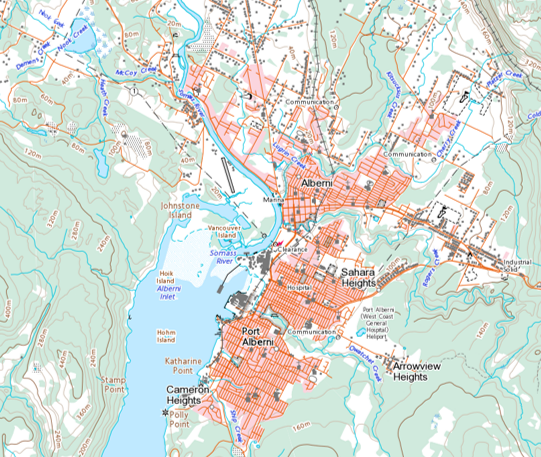
Commercial Development
Following the CLI, a number of commercial software companies began developing GIS applications.
- Hardware improvements made the technology more accessible
- Mapping Display and Analysis System (MIDAS)
- Desktop GIS released in 1986
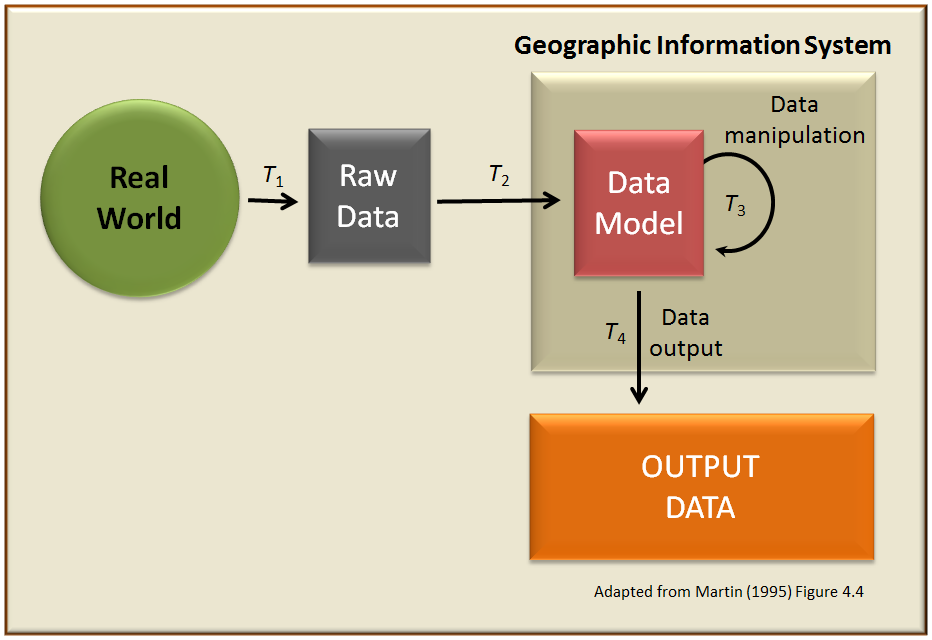
TopHat Question 3
The Canada Land Inventory led to the creation of the first digital
- Atlas
- Spatial Analysis Method
- Database
- Geographic Information System